Sustainable cassava development
This year, cassava plants have produced quite high yields thanks to good care and favorable weather, but the purchase price has decreased, causing farmers to worry. In this context, increasing the value of cassava and ensuring sustainable development requires close links between growers and cassava starch processing factories.
Falling prices affect sustainability
Ms. Ha Thi Nhu Nguyet, 46 years old, in Van Canh town (Van Canh district) grows 18 hectares of KM94 cassava, and also buys cassava from local people to sell. After 10 months of care, the cassava plant has an estimated yield of 1.5 - 1.7 tons/sao (500 m2/sao), equivalent to last year. She confided that this year the weather is favorable, with few pests and diseases, so the cassava yield is stable. However, the price of cassava has decreased significantly. At the beginning of the season, the price was 3,300 VND/kg (cassava has a starch content of 30%), a decrease of 400 - 500 VND/kg compared to last year. By mid-December, the price of cassava dropped to 2,700 VND/kg.
According to Mr. Phan Van Cuong, Vice Chairman of Van Canh District People's Committee, this year, Van Canh District has more than 450 hectares of cassava, with an estimated yield of 24 - 25 tons/ha, an increase of about 1 ton/ha compared to last year. Although cassava prices have decreased, thanks to the support of processing enterprises, cassava growers are still profitable. However, low cassava prices may affect the psychology of cassava growers, and may even last if there is no closer connection between processing enterprises and cassava growers.
According to the plan, cassava growers in Binh Dinh will complete the harvest by the Lunar New Year of At Ty 2025. Although cassava prices have decreased, cassava growers are still making a profit overall. However, this affects the sustainability of cassava acreage and cassava growing; especially when the value of cassava depends largely on market fluctuations.
Similarly, in Vinh Thanh district, where there are more than 1,200 hectares of cassava, cassava growers are also facing a sharp drop in cassava prices. Mr. Tran Minh Thuong, Deputy Director of Nhiet Dong Tam Vinh Thanh Cassava Starch Company Limited, said that at the beginning of the season, cassava prices were at VND3,200/kg, but due to the sharp decline in the cassava starch export market in the past 2 months, the company had to buy at VND2,500/kg, 500 - 700 VND/kg lower than before. Part of the reason is that the Chinese market - the largest consumer of cassava starch in Vietnam - has reduced its purchasing power; in addition, countries such as Laos and Thailand have also increased their competitiveness by increasing production and offering lower prices than Vietnam.
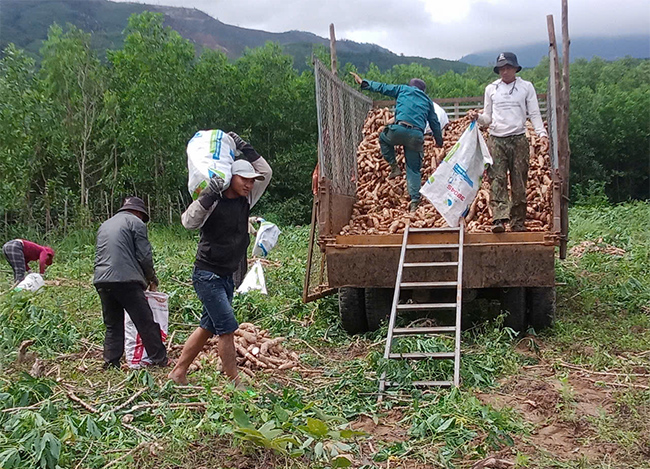 |
Harvesting cassava at the farm of Ms. Ha Thi Nhu Nguyet's family. Photo: TRONG LOI |
Orientation for sustainable cassava development
One of the important solutions for sustainable development of cassava is to build production and consumption chains. Mr. Mai Dinh Chuong, Deputy Director in charge of raw material areas of Nguyen Liem Company Limited (Van Canh), said that to stabilize production, the factory buys 600-800 tons of raw cassava every day, mainly from Binh Dinh and the Central Highlands provinces such as Gia Lai, Dak Lak, Kon Tum . This proves that the demand for raw cassava is very large and it is necessary to ensure a stable supply. In the 2025 production season, the Company plans to support farmers to expand the cassava growing area by 500-700 hectares compared to 2024, providing KM94 cassava varieties free of mosaic disease to ensure seed sources for the following crops.
Cassava is currently one of the main crops of Binh Dinh province. According to the agricultural restructuring plan for the period 2021 - 2025, cassava continues to be focused on development, especially varieties with high yield and good quality. The total cassava area in the province is currently 9,377 hectares, mainly KM94 variety (accounting for 90% of the area). Although the yield in 2024 will increase slightly (282.9 tons/ha, an increase of 0.5 tons/ha compared to the previous year), as mentioned above, the cassava industry still faces many challenges, especially in terms of price and consumption market.
According to Mr. Kieu Van Cang, Head of the Department of Crop Production and Plant Protection (Department of Agriculture and Rural Development), the province will maintain the cassava growing area at about 9,290 hectares in 2025, with an average yield of 284 quintals/ha and an output of 263,600 tons. By 2030, the province strives to expand the cassava growing area to 10,000 hectares, achieving a yield of 330 quintals/ha and an output of 360 thousand tons. One of the important goals is to develop high-quality, disease-resistant cassava varieties such as HN1, HN3, HN5, while promoting mechanization in the stages of planting, care, harvesting and transportation.
In particular, to develop sustainable cassava, the province will encourage the formation of concentrated cassava production areas associated with processing factories, implementing linkages between production and consumption areas. Cooperatives and processing factories will be encouraged to sign long-term contracts with farmers to ensure a stable source of raw materials and increase the value of cassava. In addition, the province will also support new farming models such as rotating cassava with peanuts or following the crop structure: Winter-Spring peanuts - cassava (Summer-Autumn crop) in districts such as Phu Cat and Tay Son, to improve economic efficiency and protect the ecological environment.
BENEFIT
Source: https://baobinhdinh.vn/viewer.aspx?macm=5&macmp=5&mabb=288550



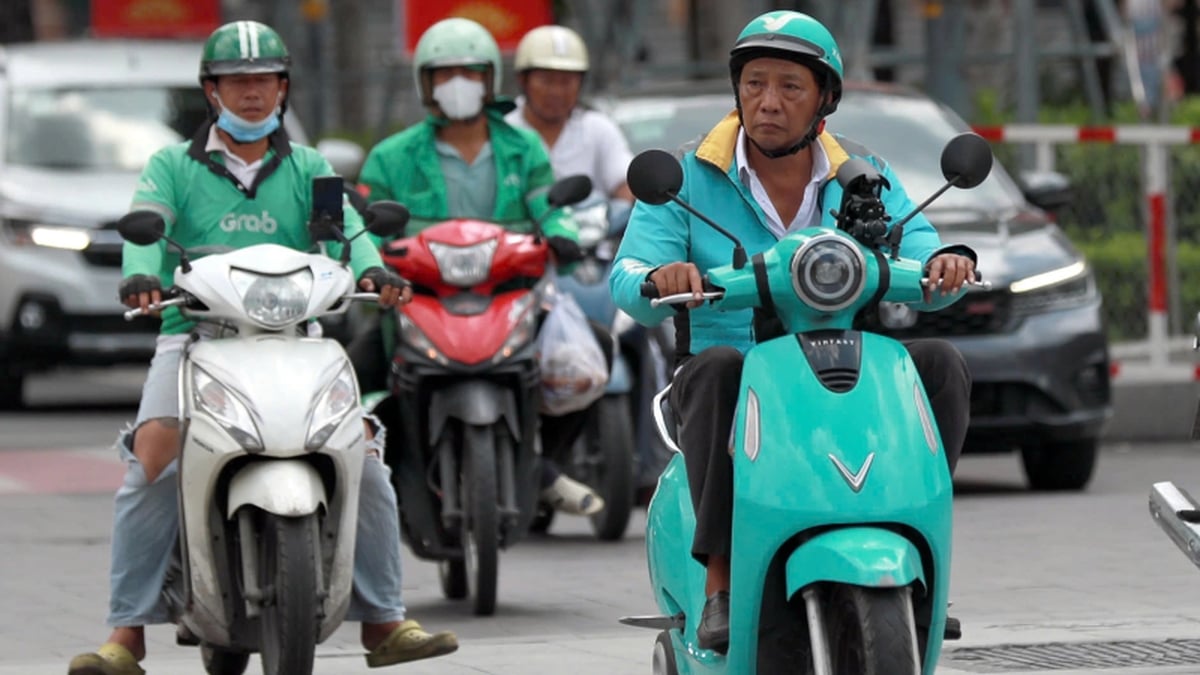
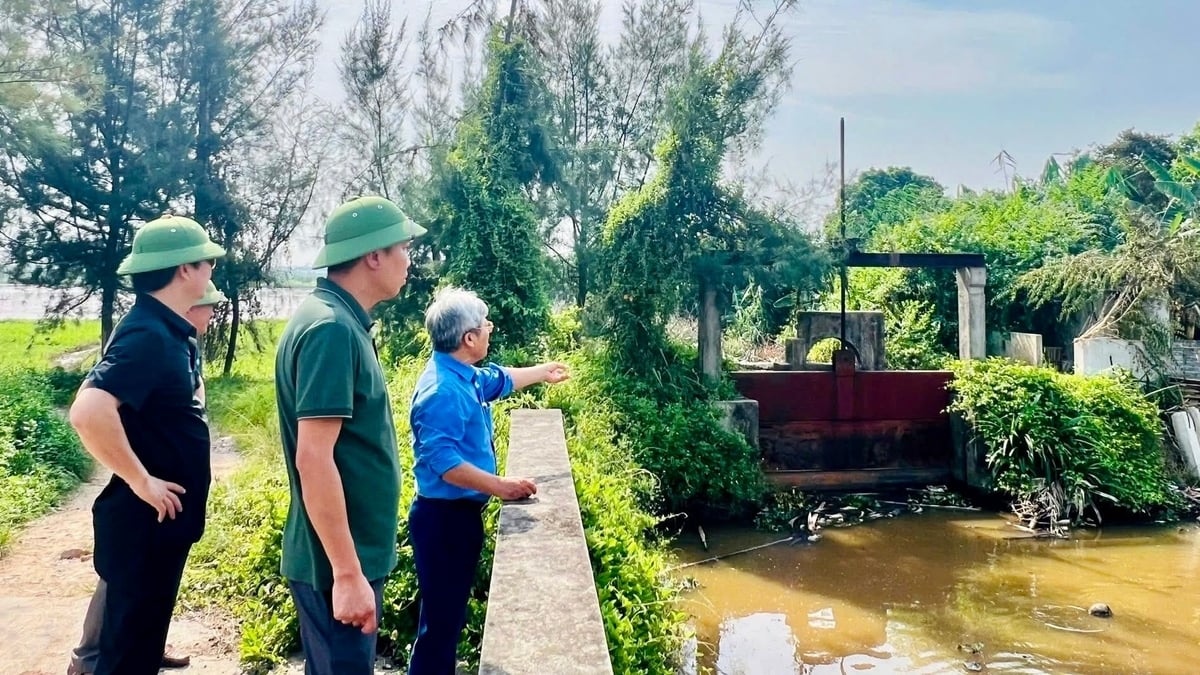


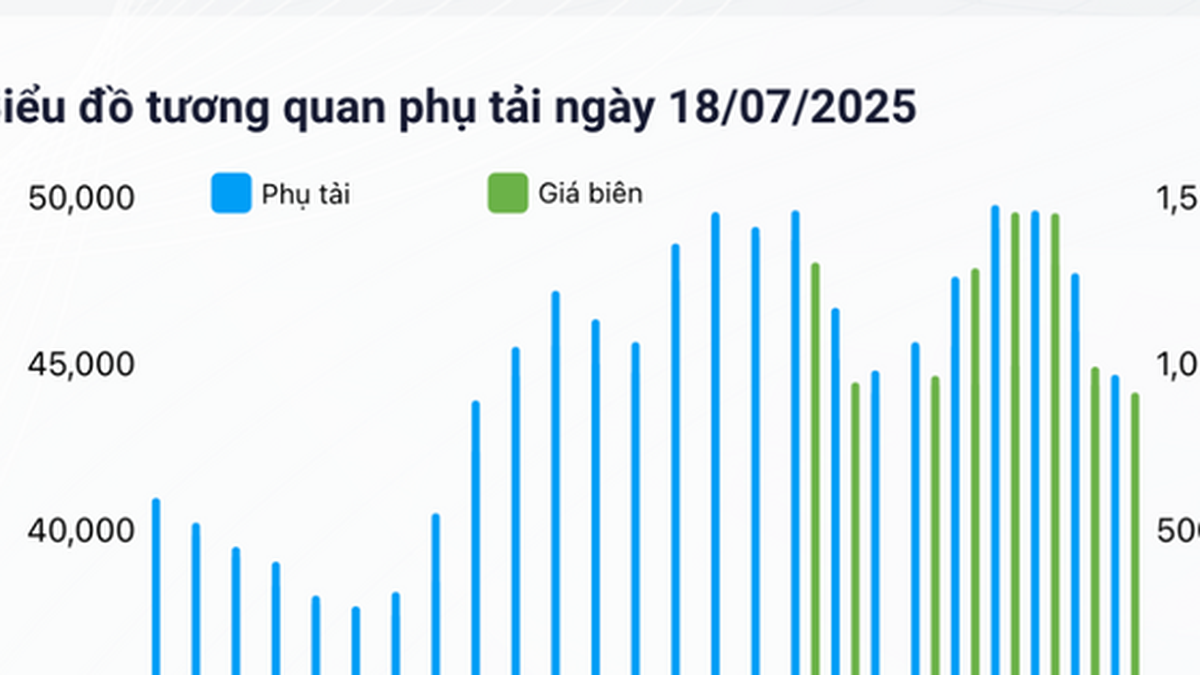
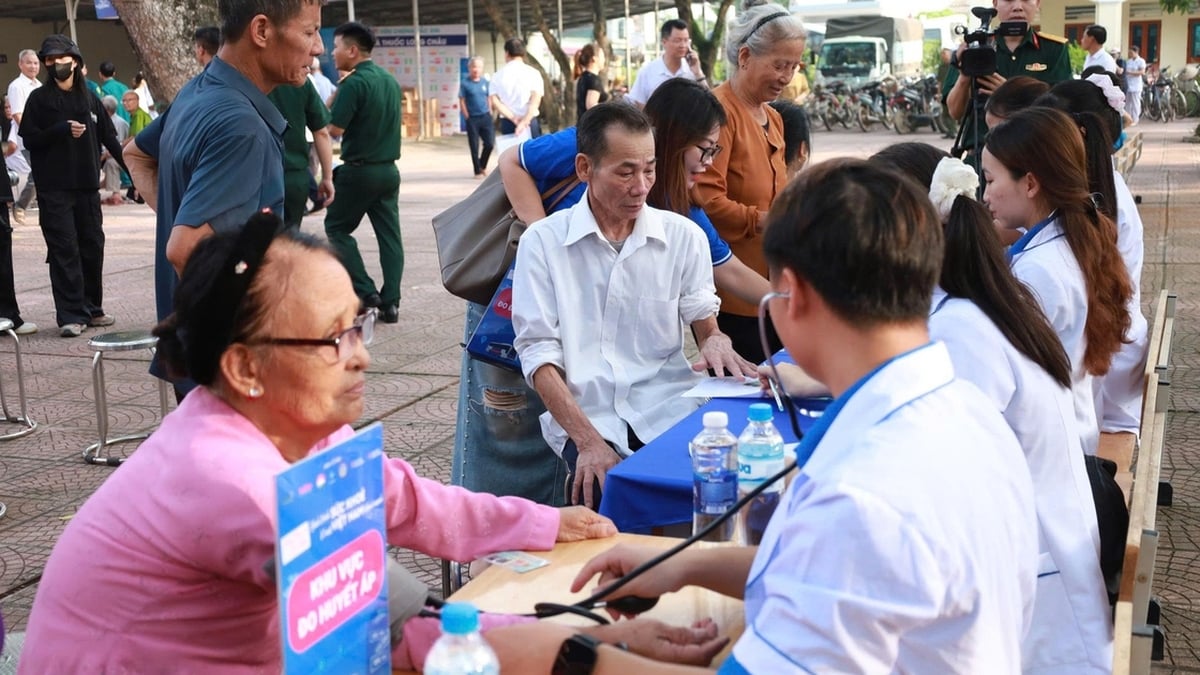

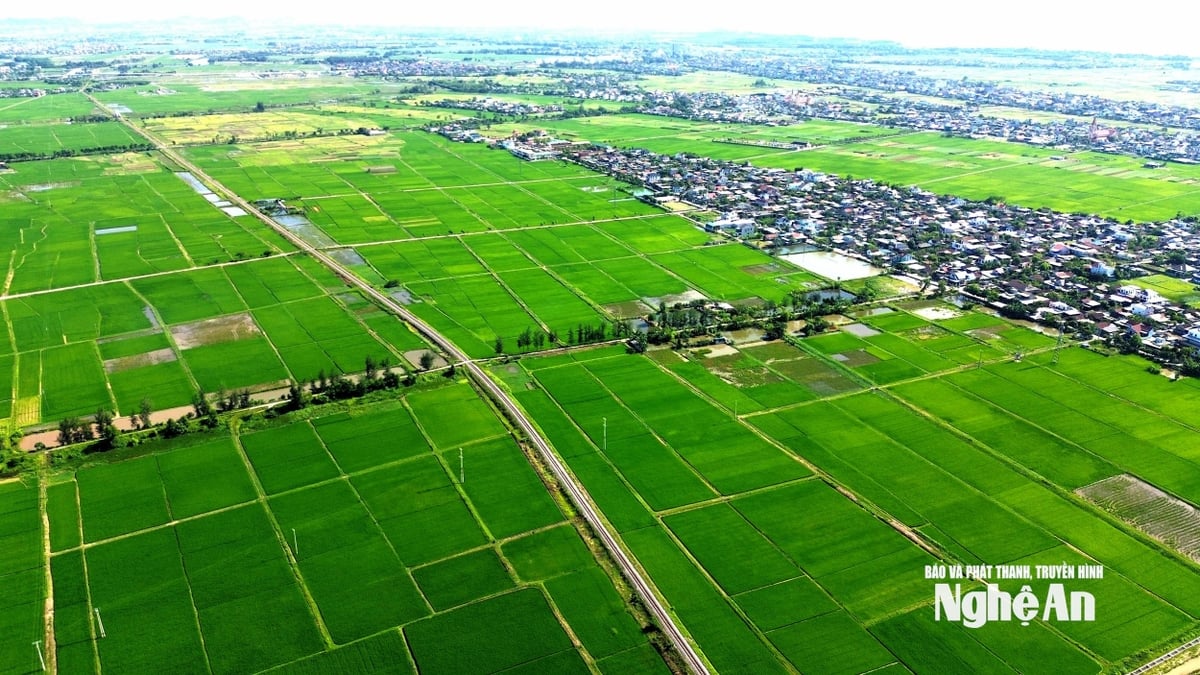

















































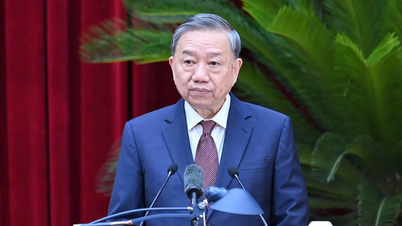
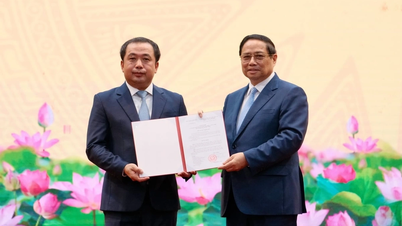



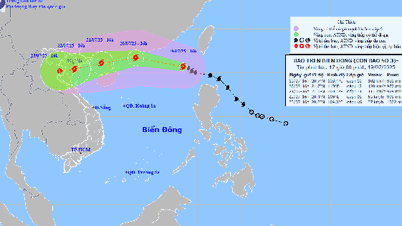





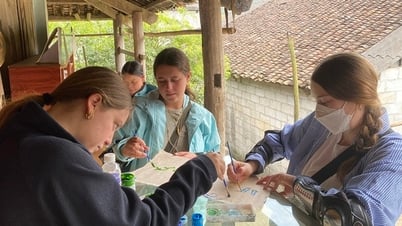

























Comment (0)